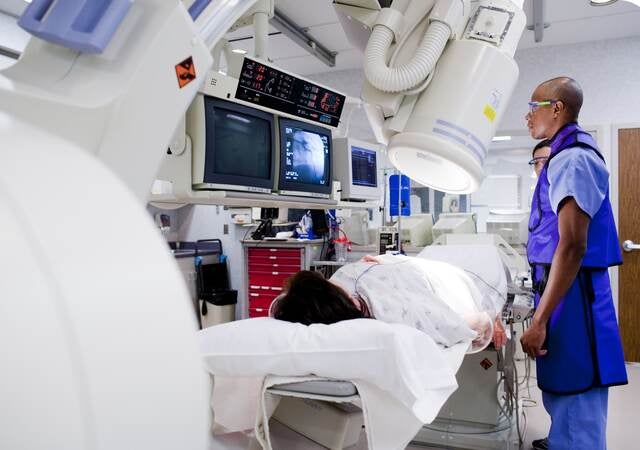Supply chains have been the foundation of the growth of the global industrial economy, bringing prosperity and increased financial security to enterprises and people around the world. However, as the COVID-19 pandemic clearly demonstrated, even the most robust supply chains can experience unanticipated interruptions that lead to the shortage of critical materials and components required for the manufacturing of a range of products.
Within the health and life sciences industry, the medical device manufacturing sector starkly illustrates the significant risks that can emerge from supply chain interruptions. During the pandemic, shortages of critical medical devices such as respirators, ventilators and test supplies placed the growing patient population at increased risk, especially children and older adults, as well as those with preexisting medical conditions. The pandemic challenged our largely untested belief in the reliability of supply chains.
Shortages of critical medical devices and other medical supplies during the pandemic have reinforced the importance of supply chain resilience. Today, leaders in the medical device industry are carefully reexamining supply chain elements and dependencies and creating action plans to effectively counter unanticipated issues that could threaten access to critical medical devices. This proactive approach is intended to help to minimize the risk of consequential supply chain interruptions in the future.
Addressing supply chain vulnerabilities: Focus on critical medical devices
In the wake of the COVID-19 pandemic, governments and the medical device industry quickly mobilized to evaluate the extent of supply chain vulnerabilities and develop strategies to help protect public health.
As an initial step, the U.S. Food and Drug Administration (FDA) coordinated an interagency effort in 2021 to develop recommendations on the kinds of medical devices critical to public health, such as those used in emergency medical care or during surgery or that provide life-sustaining support. An industry task group consisting of device manufacturers, healthcare systems and providers and other subject matter experts was formed to develop criteria for the types of devices to be included on a critical medical device list (CMDL, now known as the “506J Device List”).
Working through an iterative process to take full advantage of the expertise of medical device industry stakeholders, the task group conducted meetings and surveys to solicit input on the criteria to determine the types of devices that should be included on the CMDL, as well as current and potential supply chain vulnerabilities that could adversely impact the availability of those devices in the future.
In its 2023 report, “Critical Medical Device List: Summary and Recommendations,” the industry task group details its recommendations for the criteria that should be applied in determining the types of devices to be included on the CMDL as follows:
- Devices used to diagnose, treat, monitor or prevent a serious disease or medical condition, and which are life-sustaining or necessary to address emergent medical situations.
- Devices expected to see an increased demand for treating or diagnosing medical conditions arising from an emergency (such as a natural disaster or pandemic).
- Devices that are intended for use to diagnose, treat, monitor or prevent a serious disease or medical condition among special patient populations (e.g., children, pregnant women or people with disabilities).
The common element applicable to each of these criteria is the potential for serious injury or death of patients or healthcare providers if the medical device is unavailable or for which there is no suitable alternative.
Enabling safety, compliance and sustainability for medical innovation
Our safety science expertise and software enable industry innovators across the medical product life cycle in overcoming critical challenges and developing safer, more effective products that empower users globally.
The challenges that lead to supply chain uncertainty
In addition to identifying the criteria characteristic of critical medical devices, the task group’s report also analyzes the issues most likely to be factors in supply chain interruptions impacting medical devices. According to the report, the key factors that lead to an increased risk of supply chain interruptions include:
- Supply chain structure, such as geographic concentration, limited raw material or component suppliers, sole or single-source contracts, workforce shortages, etc.
- Device characteristics, including complex device designs, proprietary nature of components, and their lack of compatibility with other components and user interfaces.
- Limited visibility of the supply chain, like supply chain opacity, unknown inventory or use rates, or lack of predictive analytics or modeling. The lack of visibility leads to insufficient supplier compliance checks, warning letters from the FDA, and in some cases, product recalls.
- Collaboration and communication issues, such as limited or siloed communications and information sharing among supply chain stakeholders.
To counter these risks, the task group recommends five attributes essential to a resilient medical device supply chain.
- Regulatory resilience – This includes authorization from regulatory authorities for flexibility during a crisis and expedited market authorization for critical products. Most importantly, regulatory resilience requires a commitment to align with global medical device regulations, standards and conformity assessment requirements.
- Preparedness and planning – Conduct and regularly update mitigation, response and contingency planning, vulnerability and risk assessments, and supplier compliance reviews. Medical device manufacturers should periodically audit critical suppliers to verify their compliance with quality and regulatory requirements. The supplier audits can help them identify and correct minor issues before they become major supply chain risks.
- Operational diversity – Utilize a geographically diverse supplier network that includes multiple suppliers, build in redundancy in upstream suppliers and keep accurate, up-to-date reports on inventory and stockpiles.
- Visibility and collaboration – Regularly communicate and collaborate with supply chain stakeholders. Also, consider using predictive analytics and modeling to track existing inventories and run rates.
- Device use agility – Finally, to the extent possible, focus development efforts on multiple-use medical devices, and those that have clinically acceptable alternatives readily available.
The task group’s report also encourages medical device manufacturers to actively engage and collaborate with stakeholders across the entire medical device ecosystem, including other device manufacturers, healthcare providers and regulators. A high level of engagement by and among device manufacturers is instrumental in efforts to build a resilient supply chain and reduce supply chain uncertainty, according to the task group.
The medical device supply chain resilience framework
Finally, the task group’s report presents a framework to help medical device manufacturers build a resilient supply chain. Their proposed framework consists of three recommendations:
- Anticipate – Conduct a comprehensive review and analysis of potential supply chain risk. Evaluate: 1) the likelihood and severity of a potentially disruptive event; and 2) your supply chain’s current ability to respond to such events and other vulnerabilities that could affect your response.
- Mitigate – Take proactive steps now to reduce the likelihood of potential events that could disrupt your supply chain and identify options for minimizing their potential impact. A thorough supplier qualification process could include conducting regular evaluations of supplier compliance, strengthening supply chain redundancy, stockpiling inventory, identifying multiple contractors for sourcing critical materials and components, and prequalifying alternate suppliers.
- Recover – Evaluate how best to minimize the potential impact on patients that might occur during a supply chain interruption or a shortage of a critical medical device. Develop a detailed supply chain risk management strategy for promptly implementing a recovery strategy.
To help verify that your supply chain resilience strategy remains current and up to date, the report also recommends regular reviews of each element of your strategic plan and updating those aspects that may no longer be active, valid or applicable.
How UL Solutions can support your supply chain resilience efforts
Strengthening your organization’s supply chain management capabilities can help you proactively identify and address supply chain vulnerabilities. UL Solutions offers health and life sciences companies access to evaluation and audit services designed to support your resilience efforts and to minimize supply chain risks.
Monitoring the performance of your supply chain partners should be the foundation of your efforts to build your supply chain resilience. Our services include working with you to develop supplier qualification standards that establish clear metrics for supplier performance and production quality.
We can assist in verifying ongoing supplier compliance with our ULTRUS™ ComplianceWire® Supplier Qualification offering, which allows health and life sciences companies to monitor supplier performance, assess supply chain risks and generate audit-ready reports. And ULTRUS™ PurView® Product Supplier Scorecard software enables monitoring the performance of your suppliers in connection with various metrics, including quality, compliance and risk management.
Of course, there are instances when audits and inspections of supplier facilities are necessary or advisable. Our compliance teams can conduct regular, third-party-accredited audits and inspections of supplier facilities, giving you valuable insight into your suppliers and their operations.
Within UL Solutions we provide a broad portfolio of offerings to all the medical device industries. This includes certification, Approved/Notified Body and consultancy services. In order to protect and prevent any conflict of interest, perception of conflict of interest and protection of both our brand and our customers brand, we have processes in place to identify and manage any potential conflicts of interest and maintain impartiality. UL Solutions is unable to provide consultancy services to EU MDD, MDR or IVDD Notified Body, UKCA MD Approved Body or MDSAP Customers.
About the Author
Bill Pease brings over 30 years of experience in environmental health sciences and sustainability to his role as chief scientist at UL Solutions. Bill uses his expertise in data-driven systems and product curation to support companies in making more sustainable, informed decisions across their product portfolio and supply chains.
Get connected with our sales team
Thanks for your interest in our products and services. Let's collect some information so we can connect you with the right person.






